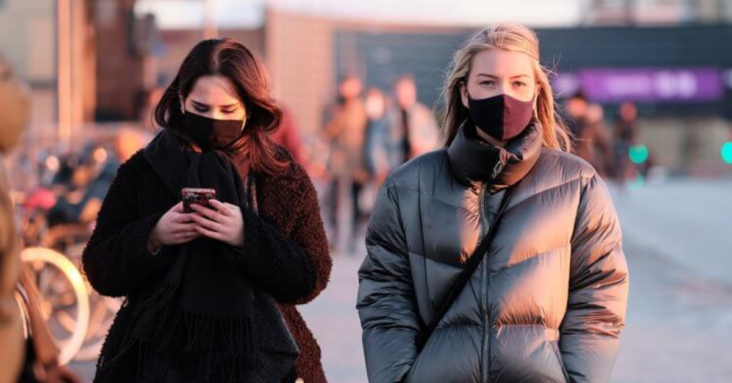
Several pathogenic microbes were identified and quantified on masks worn during the pandemic, according to a Japanese study that was published in Scientific Reports.
The study is one of the first to address the probable hygiene issues caused by bacterial and fungal growth on masks worn daily in the community.
“Since masks can be a direct source of infection to the respiratory tract, digestive tract, and skin, it is crucial to maintain their hygiene to prevent bacterial and fungal infections that can exacerbate COVID-19,” the authors wrote.
The study involved 109 participants aged 21 to 22 years who were asked about the type and duration of mask used and their lifestyle habits. Bacteria and fungi were collected from the three types of masks—gauze, polyurethane, and non-woven—worn between September and October 2020.
The researchers found that the face side of the masks had more bacteria, whereas the outer side of the masks contained more fungi.
In addition, longer use of the mask resulted in an increase in fungi but not in bacteria because “fungi and their spores are resistant to drying, they can survive under the condition where masks dry out.”
Non-woven masks were found to have fewer fungal colony counts on the outer side compared to the other two mask types. Non-woven masks have three layers, two-layer fabric with a non-woven middle layer filter.
Researchers said they were surprised to find that there were no significant differences in the numbers of bacteria or fungi on washable or reusable masks that had been washed.
“The proper cleaning method for cotton face masks has been recommended to reduce the microbial load on the masks,” the authors wrote. “However, in the current experiments, we did not find significant differences in bacterial or fungal colony numbers on the masks based on washing.”
The researchers also examined whether certain lifestyle habits such as gargling, consumption of natto, and use of the different modes of transportation—public transportation, personal vehicle, and walking or biking— had any effect on the microbial counts on the masks.
“We found no differences in the bacterial or fungal colony counts on both sides of the masks among the three transportation systems,” the authors wrote.
There were also no differences in microbial counts on masks of participants who gargled once a day. Gargling is a Japanese custom believed to prevent respiratory infections. The practice is often recommended by the Japanese health authority alongside hand washing as a preventative measure against influenza.
A study from Penn State College of Medicine published in the Journal of Medical Virology in September 2020 found that several types of mouthwash and nasal rinses were effective at neutralizing human coronaviruses, suggesting that the products may have the potential to lessen the amount of SARS-CoV-2 load, or the amount of virus inside the mouth. SARS-CoV-2 is the virus that causes COVID-19.
A small pilot study is currently being conducted by the University of California, San Francisco on whether gargling with certain mouthwash or gargling solutions will reduce viral load in patients diagnosed with COVID-19. The study is expected to complete this September.



